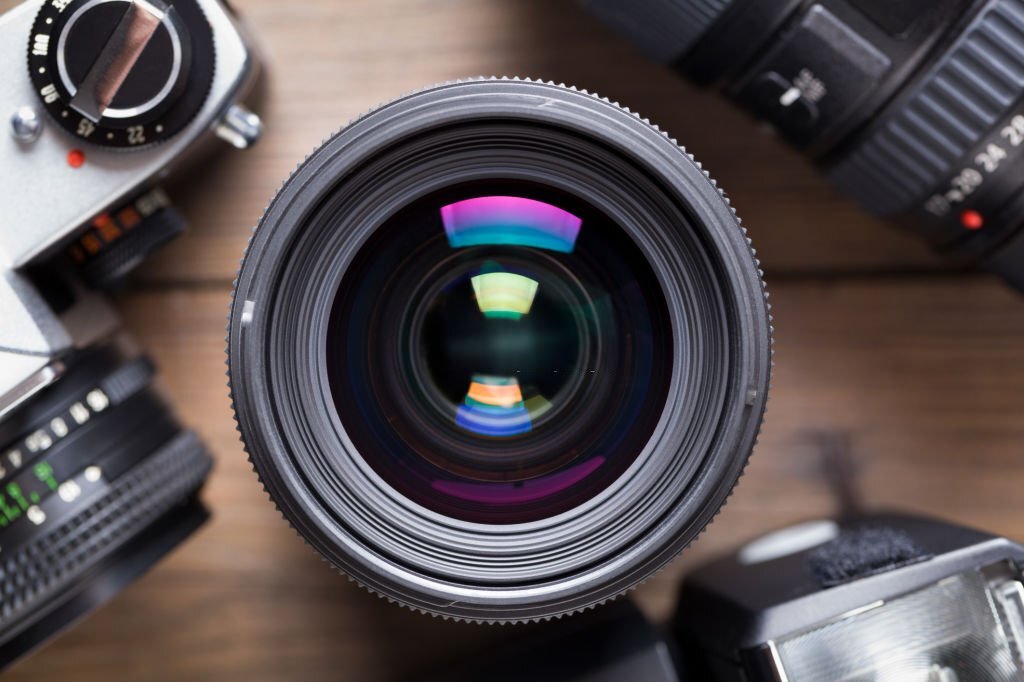When it comes to photography, focusing on the right elements plays a huge role. A sharp object is the first thing that comes to the notice of the human eye. All the unfocused elements are considered background or other decorative elements for an image. You’ll need to focus on the right object with the right aperture using the correct lens, and that’s how you’ll be able to capture your desired object well.
This means that your lens is the most important part of the camera, as important as your own eye for you. The aperture and focal length you select decide the way it sees. The result of focal length is easier to notice if you use the right lenses, as there’s a major change when you change from one lens to another.
In this blog, we are demystifying camera lenses and how important are aperture and focal length to capture a good picture. Let’s dive in!
Understanding the Focal Length of Camera lenses
Focal length is the coverage between your lens’ sharpest focus point and your camera’s sensor when focusing your camera to infinity.
The digital camera lens of the focal length of your film determines how much your camera will be able to capture. If the number is smaller, you’ll have a wider angle of view and cover more of the scene, and if the numbers are larger, you’ll see less, capturing a narrow-angle.
How Does Focal Length Affect An Image?
Angel of view
How much of the view is captured in the image depends on the angle. As mentioned above, the shorter the focal length is, the wider your image will be, whereas a larger focal length will capture a smaller image.
Depth
If your focal length is long, you’ll be able to focus the small objects from a distance as it delivers a shallow depth of field. If your focal length has a larger field of focus, you’ll be able to get a wider range of objects in focus.
Perspective
The focal length of your lens can also change the scale of the image and your perspective. The space between the elements of your picture appears to be expanding the perspective with a shorter focal length. With a telephoto lens, you can compress perspective, resulting in stack elements in a picture.
Image shake
Image shake is basically the quality of the image while pressing down the shutter button, which causes the vibration leading to images getting blurry. With a tripod, you can avoid this mess.
Understanding Aperture
The opening in a lens through which the light enters the camera is called the aperture. If you want to add dimensions to your photos, you can do it by controlling the depth of field. It is very popular among portrait photographers, delivering an amazing shallow focused effect with a blurred background.
How Does The Aperture Affect An Image?
Exposure
Every time you change the size of the aperture, it alters the overall intensity of light that gets inside your camera. If you want a brighter image, change the setting to a large aperture.
Depth of field
It is basically how sharp your image appears from front to back. Some images have an out-of-focus background with a shallow depth of field, while others have a high depth of field where both the background and foreground appear to be sharp.
You must have noticed an aperture indicated this way on your digital camera before. On your viewfinder or LCD screen, your aperture will generally look something like this: f/2, f/3.5, f/8. Some cameras eliminate the slash and indicate it with f-stops like this: f2, f3.5, f8.
You may find it confusing, but f/2.8 is a larger aperture than f/4 and a much larger aperture than f/11. It’s a little tricky but an extremely important part of the aperture. Beginners tend to get baffled by it, but everything comes with practice.
Demystifying Camera Lenses
A camera without a lens is the same as a vehicle without fuel. If you decide to remove it, the only thing you’ll capture is white light which will be of no use. If you have a cheaper camera, you can still capture a good picture with a bigger lens.
A camera lens collects light to a fixed focal point and brings it to the film strip in a film camera, but if you talk about a DSLR camera, the lens throws light to the digital sensor. Camera lenses are composed of a series of glass plates that are concave (curved inward) or convex (curved outward).
The Different Types Of Lenses
We will take you through different types of camera lenses to make you understand how they differ from each other.
The Standard Prime Lens
This lens delivers a fixed focal length. If you want to get a 35mm Prime Lens, you can only capture in 35mm. The Prime Lens is usually used in situations when the object is mostly stationary, and the user or photographer can roam around. These include wedding portraits, streetscapes, and landscapes.
You’ll get high-quality images and lightweight while getting amazing good night and low light photos.
The Zoom Lens
If you are aiming to cover a sporty event or your location is far away and up close, this lens will do wonders for your work.
Zoom lenses offer different focal lengths. Usually, you might come across a zoom lens that works from 50mm to 200mm.
The Fisheye Lens
The Fisheye Lens is mostly used for scenery to be captured in one shot. Real estate business owners opt for a Fisheye lens to capture a whole room in a single shot. This can be of no use in portrait or wedding photography.
The Wide Angle Lens
This lens works the same as it sounds. Popularly used in night photography or landscape photos, they do need a significant amount of post-editing to avoid the distortion adapted in the lens.
The Telephoto Lens
A telephoto lens offers an amazing level of magnification. They are composed of many glass elements, which function more like a telescope. A telephoto lens lets the photographer get close shots of things that are far away.
The Macro Lens
Last but not least is the macro lens. You can consider a macro lens for an extreme close-up! When you see a worm in the soil or the bubble before it pops, you’re looking at a Macro shot. These lenses can deliver you the best detail for your investment, but that can be a lot of investment for a good lens.
Things To Consider Before Buying A Camera Lens.
There are some extremely important factors to look into when you decide to invest in a new camera lens to ensure you make an informed decision. Here are some key aspects to consider before purchasing a camera lens:
- Compatibility:
Check the compatibility of the lens with your camera body. Different camera brands and models have specific lens mounts, so ensure the lens you choose is compatible.
- Lens Type:
Determine the type of lens you need based on your photography style and preferences. Wide-angle lenses are ideal for landscapes and architecture, while telephoto lenses are better suited for wildlife and sports photography. Macro lenses are designed for close-up shots, and prime lenses offer excellent image quality with a fixed focal length.
- Image Stabilization:
Image stabilization helps reduce camera shake, resulting in sharper images. This feature can be particularly important for telephoto lenses or handheld shooting in low light. Decide whether image stabilization is crucial for your photography needs.
- Optical Quality:
Assess the overall optical quality of the lens by reading reviews, checking sample images, or consulting with photographers. Look for factors such as sharpness, minimal distortion, and chromatic aberration control.
- Budget:
Determine your budget and explore lenses within that range. Keep in mind that high-quality lenses can be a long-term investment, offering better performance and durability.
- Future Considerations:
Consider your future photographic aspirations and how the lens fits into your long-term goals. Will you be expanding your gear or upgrading your camera body? Ensure the lens is compatible and adaptable to potential changes in your equipment.
Wrap Up!
Understanding aperture, focal length, and how a lens will affect your images is a huge step in planning out your journey as a photographer.
There’s a lot more to study than just how close or far the object is from the camera and knowing how all of it relates to your decision to buy a lens.
Once you fully understand the information explained above, you will know everything focal length, aperture, and lens does to your photos. However, it may take a lot of practice to completely understand it.
If you are looking for camera lenses in Pakistan, get in touch with us, as we are the leading camera shop in Pakistan, providing top-notch lenses. Tell us your work, and we will suggest you the one fully catering to it.








